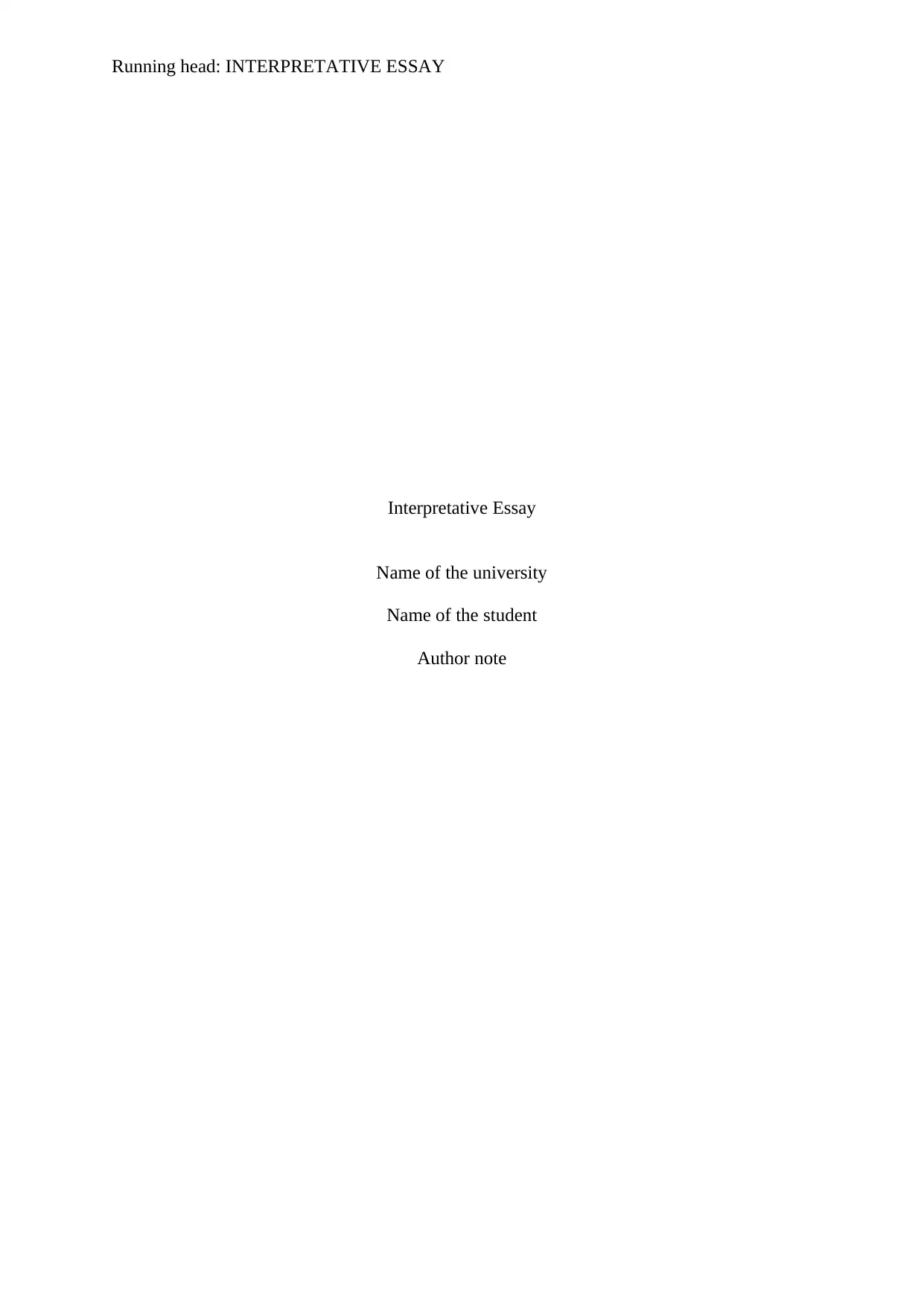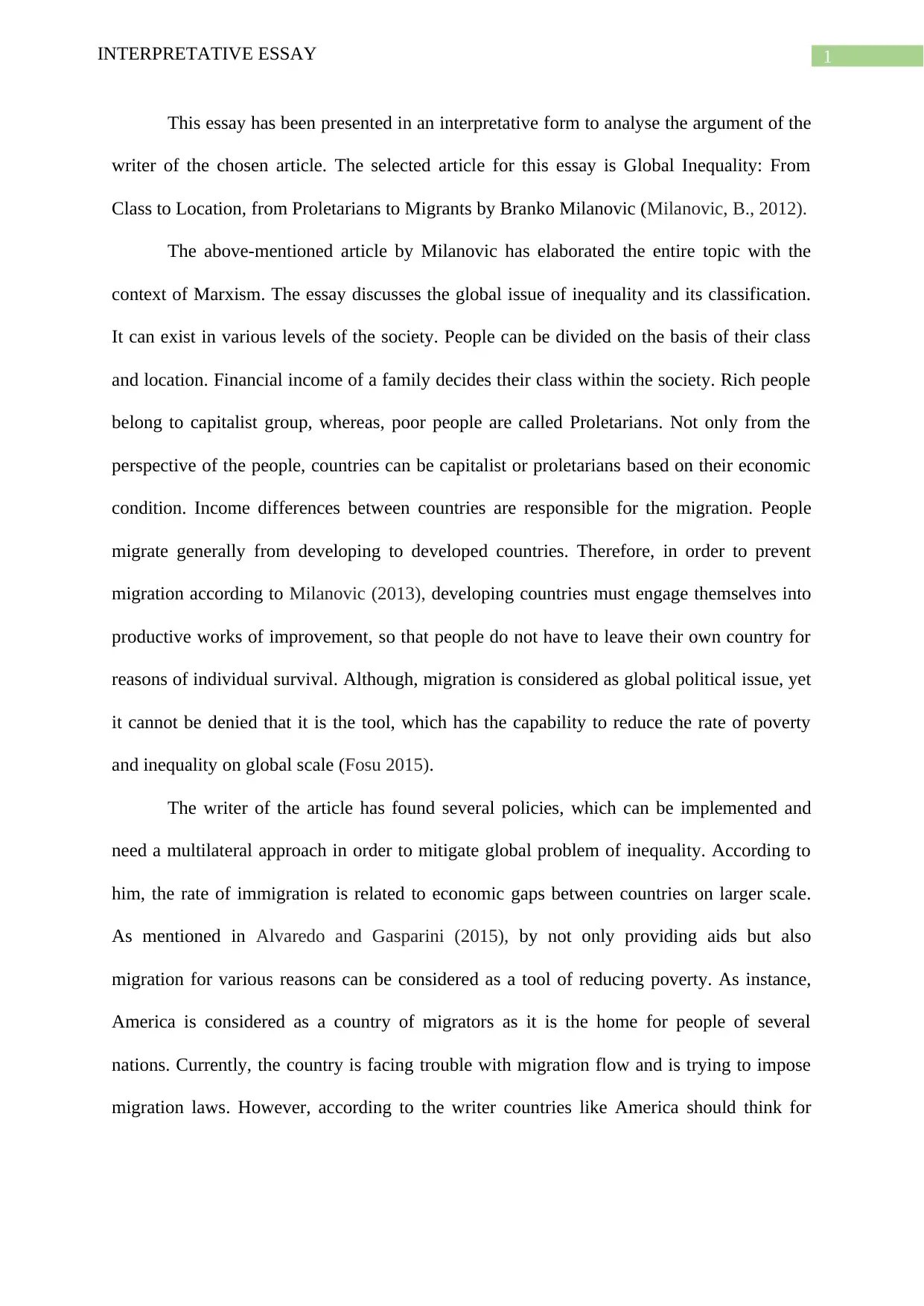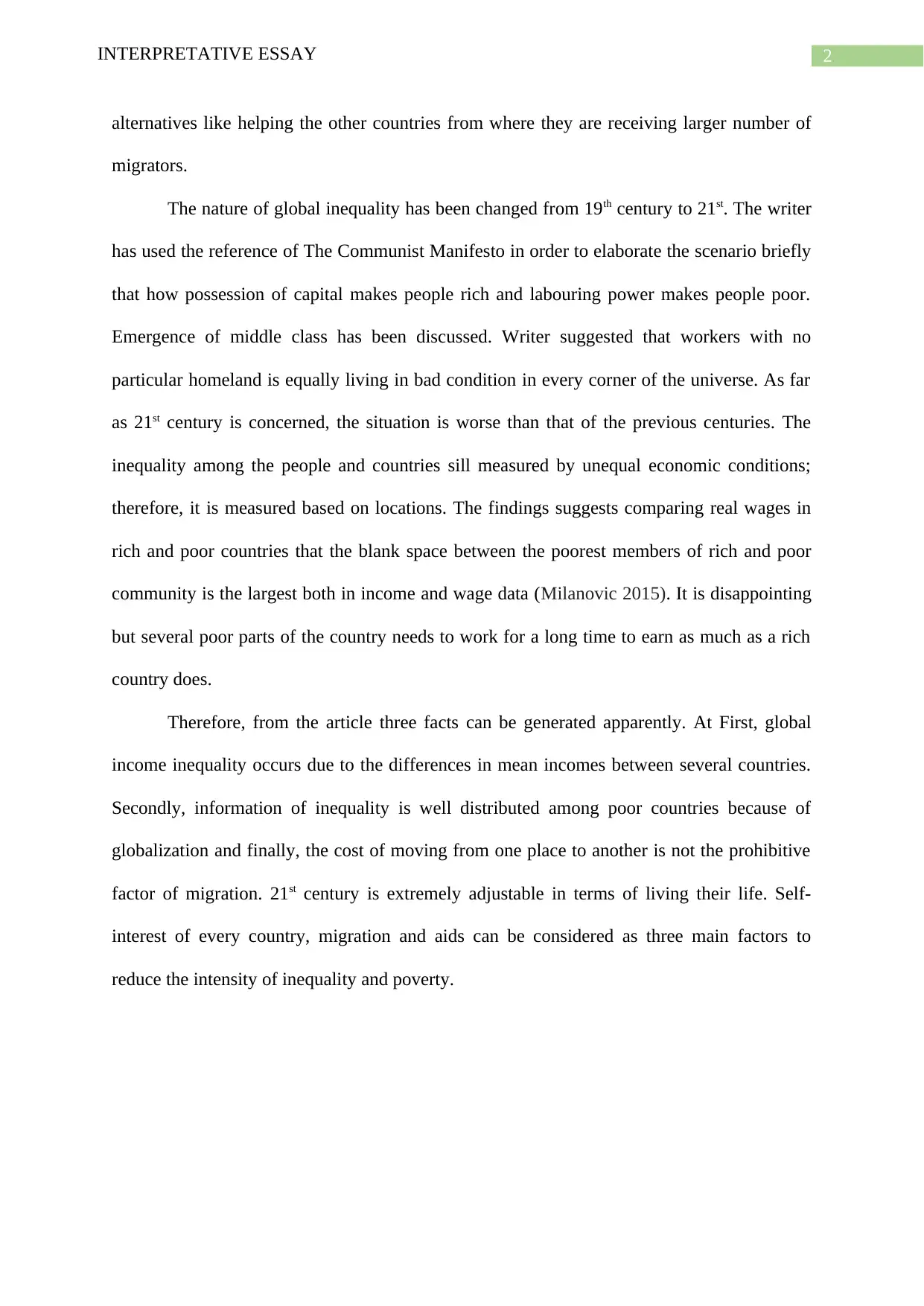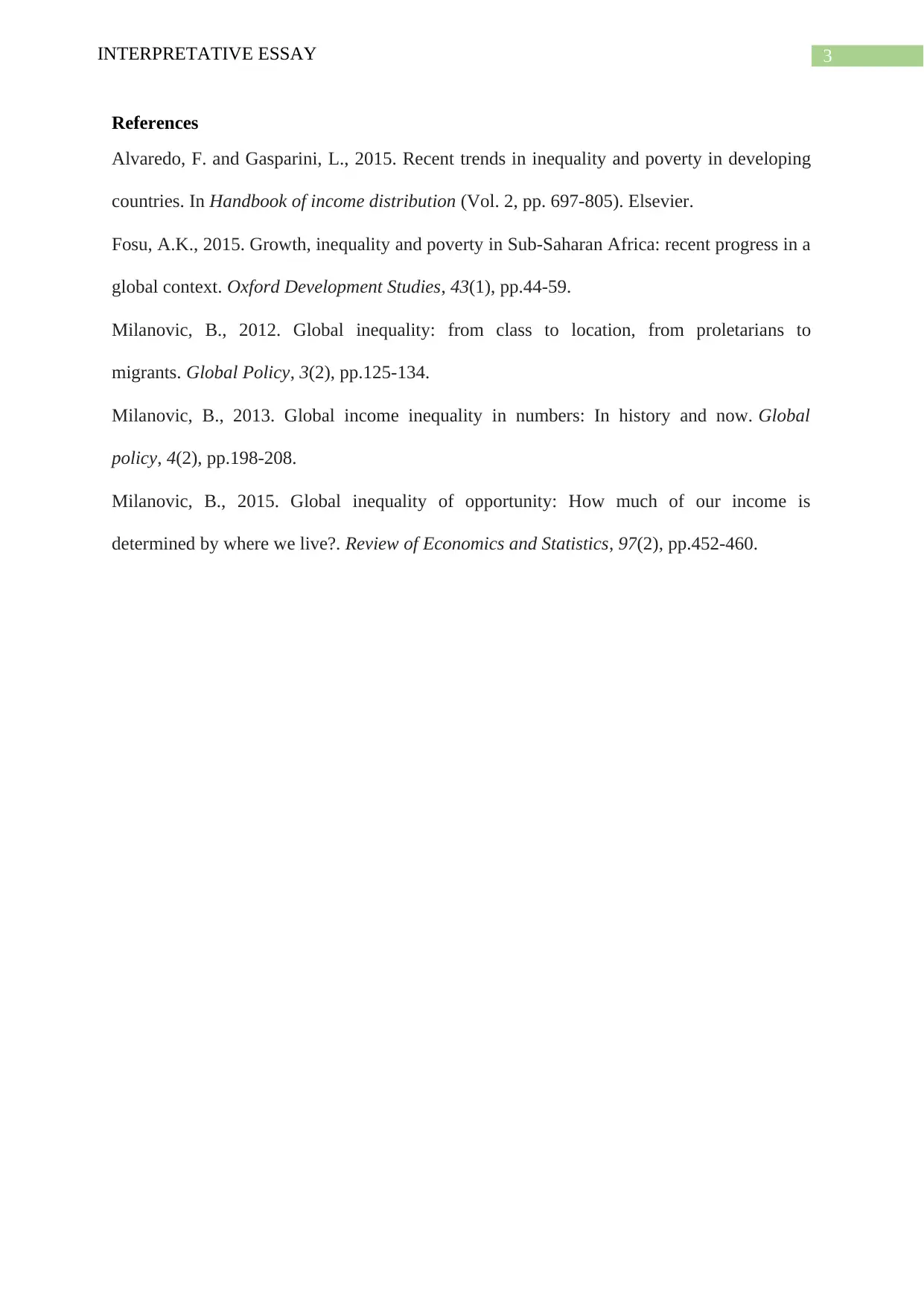Interpretative Essay: Global Inequality, Economics, University
VerifiedAdded on 2023/06/07
|4
|872
|229
Essay
AI Summary
This interpretative essay analyzes Branko Milanovic's article, "Global Inequality: From Class to Location, from Proletarians to Migrants." The essay explores how global inequality is classified, focusing on class and location as key factors. It discusses the impact of income differences on migration patterns, from developing to developed countries, and the role of migration in reducing poverty. Milanovic's arguments, rooted in a Marxist perspective, highlight the changing nature of inequality from the 19th to the 21st century, emphasizing the significance of economic conditions and the increasing disparities between rich and poor countries. The essay references key factors such as self-interest, migration, and aid as crucial elements in addressing inequality. The essay also mentions the importance of immigration laws and policies to reduce inequality and poverty on a global scale. It also refers to the factors contributing to global income inequality, the impact of globalization, and the role of migration costs.
1 out of 4











![[object Object]](/_next/static/media/star-bottom.7253800d.svg)